#Dnipropetrovsk Oblast
Text
1 note
·
View note
Text
every time I hear some dumbass on tumblr claim the Ukrainian government is anti-Semitic I want to beat the shit out of them with a chair. but I can’t do that, so let me hit you with some fun facts instead:
prior to the invasion, Ukraine had Europe's fifth largest Jewish population. (x)
prior to the invasion, Ukraine had the world's 11th largest Jewish population. (x)
As You May Have Heard, their current president, Volodymyr Zelenskyy, is both Ukraine’s sixth president and Ukraine’s first Jewish president. for comparison, the US has had 46 presidents and Biden is our second Catholic.
Ukraine has had a total of 16 Prime Ministers (not including 2 acting PMs), 2 of which have been Jewish: Volodymyr Groysman and Yukhym Zvyahilsky. (x)
in 2014, the governor of Dnipropetrovsk Oblast, Ihor Kolomoyskyi, and the Ukrainian Speaker of Parliament, Groysman mentioned above, were both Jewish. (x) (x) btw, you’ll notice Putin features a lot in these articles...
this makes Ukraine the world’s first country aside from Israel to simultaneously have a Jewish head of state and a Jewish head of government. super neat!!!! (x)
Ukraine's Jewish population is majority Haredi and Orthodox. Hasidic Judaism actually originated in Ukraine. (x)
also of Ukraine's cities, the ones with the biggest Jewish population aside from Kyiv? Dnipro, Kharkiv, and Odessa. (x) go see what Russia has done to those cities. just go see.
not to seem like I’m pushing an agenda or anything* but maybe Vladimir ‘openly cites Stalin as inspiration’ Putin perhaps is not your best source of information?
#ukraine#russo-ukrainian war#russian invasion of ukraine#russo ukraine war#volodymyr zelensky#volodymyr zelenskyy#russia-ukraine war#antisemitism#*i am. i'm 100% pushing an agenda. support ukraine!
515 notes
·
View notes
Text


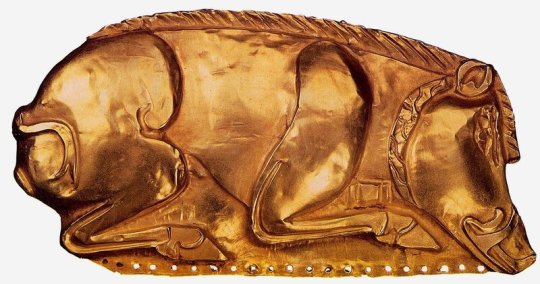
Scythian sword with boar plaque decoration 7th-4th C. BCE. Barrow near Oleksandrivka village, Dnipropetrovsk Oblast. The Museum of Historical Treasures of Ukraine, Kiev.
#scythian#scythian gold#sword#swords#scabbard#art#ancient art#ancient#antiquities#antiquity#museums#artifacts#7th century bce#4th century bce
577 notes
·
View notes
Text

Octavia but she's a petrykivka painting. (*ᴗ͈ˬᴗ͈)ꕤ*. This is a traditional Ukrainian decorative painting style, originating from the village of Petrykivka in Dnipropetrovsk oblast, where it was used to decorate house walls and everyday household items.
#octavia (づ8w8)づ ♡#oc art#sona art#artists on tumblr#art#digital art#digital painting#still one of my favourite artworks: I tried something new; had fun; and made something I like#petrykivka#monster girl#character design#character art#lineless art#illustration#spider humanoid#alien oc#ukrart#ukraine#украртпідтримка#укр тумбочка#украрт#арткозацтво#ukrainian culture
25 notes
·
View notes
Text

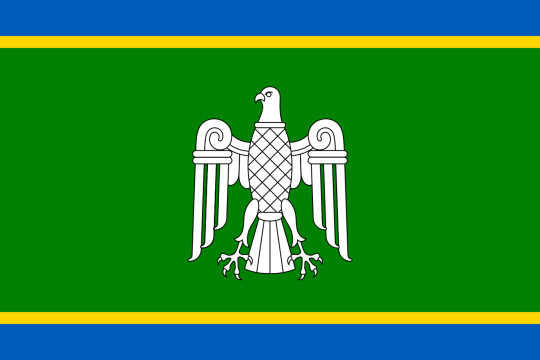

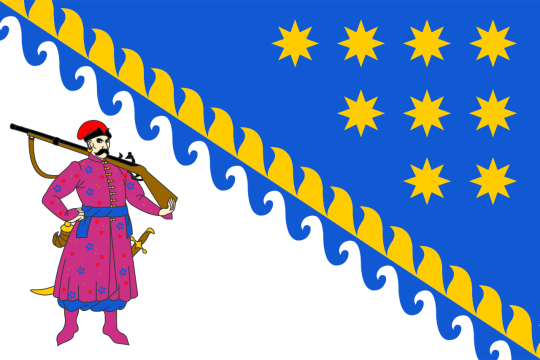
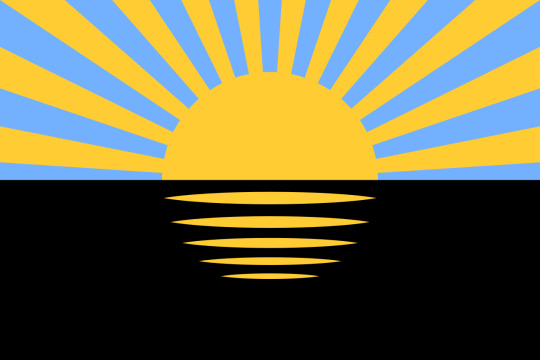
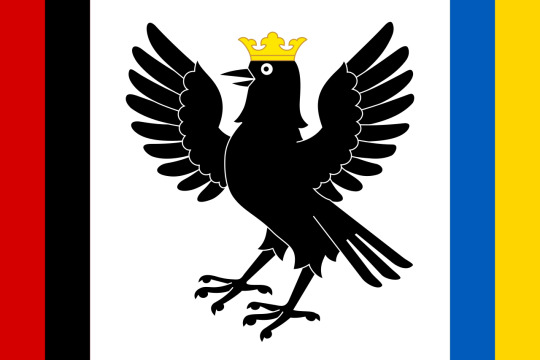
Flag Wars Bonus Round
38 notes
·
View notes
Text
My next post in support of Ukraine is:
Next site, Dnipro State Medical University (Дніпровський державний медичний університет) in Dnipro, Dnipropetrovsk Oblast. It was established in 1916 and went through several name changes over the years, receiving its current name in 2021. It's one of the oldest educational institutions in Ukraine & originated out of the Ekaterynoslav Higher Female Medical Courses. I couldn't find much info on that, but it probably dated from "russian" empire times. Over the years, the university has trained doctors, dentists, pharmacists, & nurses.
#StandWithUkraine
#Сл��ваУкраїні 🇺🇦
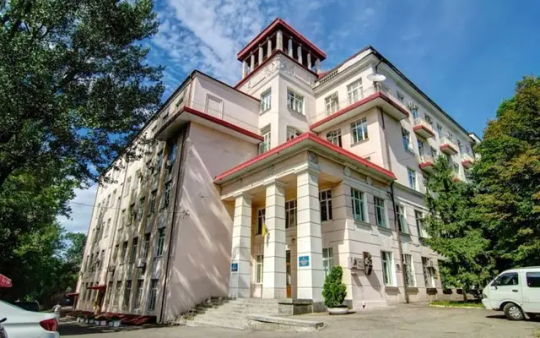
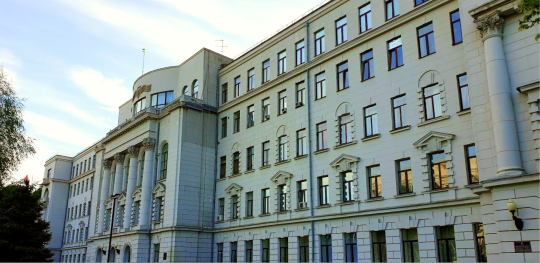

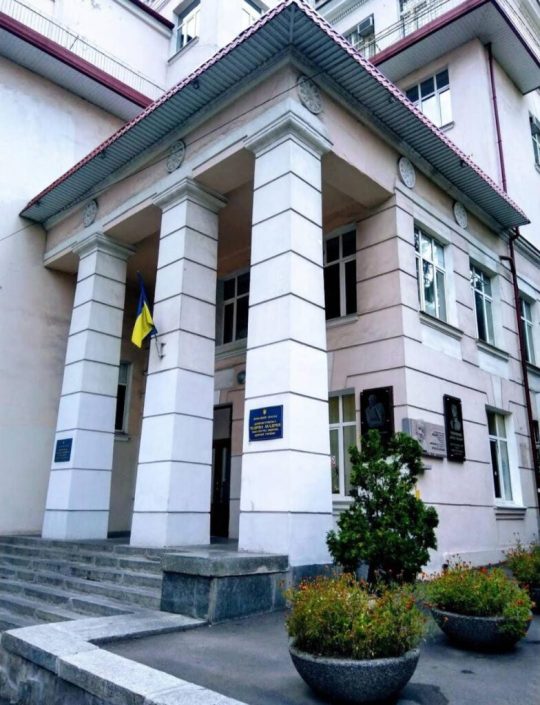
23 notes
·
View notes
Text

"Василь Вовк. Витинанка "Вазон з квіткою та птахами". 1936 р. селище Петріківка Царичанського району Дніпропетровської обл. Українське народне мистецтво. Живопис. 1967"
Vasyl Vovk, vytynanky (paper cutting) of birds and a vase of flowers, Petrykivka (now in Dnipropetrovsk Oblast, Ukraine), 1936
В. І. Заболотний + Б. С. Бутник-Сіверський, Українське народне мистецтво: Живопис (Київ: Мистецтво, 1967), via UaStanislav
38 notes
·
View notes
Text
Fifty-five km behind the frontline, two Ukrainian helicopters are destroyed by Russian Armed Forces missiles, Novopavlivka, Dnipropetrovsk Oblast. Russia seems to have revolutionized their targeting cycle and implementation of PGMs lately. This looks like footage that would have been from the other direction last year.
17 notes
·
View notes
Photo


David Dubnitskiy (Ukraine Photographer)
Dnipropetrovsk Oblast, Ukraine
79 notes
·
View notes
Text
Daily Wrap Up April 27-May 1, 2023
(Unplanned long weekend break due to inconvenient minor injury. Oops.)
Under the cut:
A Russian mass missile attack against Ukraine killed 25 people, including five children, on April 28, according to the Ukrainian authorities. The Russian overnight attack that hit a nine-story residential building in the city of Uman, Cherkasy Oblast, killed 23 people, including four children, as of 7 p.m., the Interior Ministry reported. (These numbers may continue to change.)
A fire at a fuel storage facility in the Crimean port city of Sevastopol, caused by an apparent drone strike, has been extinguished, the Moscow-installed governor has said. Video footage posted on social media earlier on Saturday showed a large waterside area on fire, with a column of black smoke rising from the burning fuel. Other images showed a huge pall of smoke hanging over the area. More than a dozen fuel tanks are situated at the site in Kozacha Bay.
Ukraine’s army stopped 20 attacks by the Russian army in the Bakhmut, Avdiivka and Marinka on Sunday.
Russian missile strikes have injured 34 civilians and apparently damaged railway infrastructure and an ammunition depot in south-eastern Ukraine, hours before an explosion inside Russia derailed a freight train. The attacks on both sides of the border on Monday apparently aimed to disrupt military logistics before a significant Ukrainian counteroffensive against occupying Russian troops, expected to start shortly in the south or the east.
The Ukrainian military says it is locked in a “positional struggle” as fierce fighting continues to rage in Bakhmut, adding it has been able to push back Russian forces after a series of counterattacks.
Four civilians died as a result of Ukrainian shelling on a village just over the border in Russia's Bryansk region on Saturday evening, a local governor said.
A Russian mass missile attack against Ukraine killed 25 people, including five children, on April 28, according to the Ukrainian authorities.
The Russian overnight attack that hit a nine-story residential building in the city of Uman, Cherkasy Oblast, killed 23 people, including four children, as of 7 p.m., the Interior Ministry reported.
The National Police earlier said that at least 18 people had been injured in Uman, nine of whom had been hospitalized.
The number of casualties may grow as the rescue operation continues at the destroyed building.
The attack partially destroyed three upper floors of the apartment building, causing large fires, according to first responders.
Other missiles Russia launched on April 28 targeted Dnipropetrovsk and Kyiv oblasts.
A young woman and a two-year-old child were killed, and four other civilians were injured in the city of Dnipro, according to the regional authorities.
Kyiv Oblast Governor Ruslan Kravchenko said that a high-rise building in Ukrainka, some 50 kilometers south of Kyiv, was damaged by the missile debris.
Two people were injured, including a 13-year-old child who was hospitalized in a Kyiv hospital, according to the Interior Ministry.
Ukraine's air defense shot down 21 of the 23 X-101 and X-55 cruise missiles, as well as two drones, that Russia had launched using strategic Tu-95 aircraft from the Caspian Sea, according to Ukraine's Air Force.
Ukraine’s power grid operator Ukrenergo said the missile attack had not damaged the country's energy infrastructure.
The deliberate killing of civilians at any time and in any place breaches the Geneva Conventions and constitutes a war crime.
Dmytro Kuleba, Ukraine’s foreign minister, has argued that the April 28 mass missile attack is another proof Ukraine needs to be supplied with American-made F-16 fighter jets.
Ukraine has been asking to receive F-16 warplanes to protect its airspace from Russian attacks and strengthen its upcoming counteroffensive. Yet, many allies, most notably the U.S. and Germany, have not backed the idea.
-via Kyiv Independent
~
A fire at a fuel storage facility in the Crimean port city of Sevastopol, caused by an apparent drone strike, has been extinguished, the Moscow-installed governor has said. .
Video footage posted on social media earlier on Saturday showed a large waterside area on fire, with a column of black smoke rising from the burning fuel. Other images showed a huge pall of smoke hanging over the area. More than a dozen fuel tanks are situated at the site in Kozacha Bay.
The strike, reportedly by a “kamikaze” drone, came a day after a wave of missile attacks on Ukrainian cities killed 26 people, including many in an apartment block in Uman in the Cherkasy region.
After the drone strike at 4.30am, a firefighting train was reportedly brought in to try to extinguish the blaze.
“According to preliminary information, the fire was caused by a drone hit,” the city’s Russia-installed governor, Mikhail Razvozhayev, wrote on Telegram.
“The situation is under the control of our firefighters and all operative services,” he said. “Since the volume of fuel is large, it will take time to localise the fire.”
Razvozhayev said the fire was assigned the highest ranking – level four – in terms of how complicated it would be to extinguish. He said it had not caused any casualties and would not hinder fuel supplies in Sevastopol.
Razvozhayev reported earlier this week that the Russian military had destroyed a Ukrainian sea drone that attempted to attack the harbour, and another one had blown up, shattering windows in several apartment buildings but not inflicting any other damage.
Sevastopol has been a regular target of drone attacks, especially in recent weeks. The city, on the Crimean peninsula that Russia annexed from Ukraine in 2014, has come under repeated air attacks since Russia’s invasion of its neighbour in February last year.
Russian officials have blamed the attacks on Ukraine. The Ukrainian military did not immediately respond to a request for comment on Saturday. Kyiv almost never publicly claims responsibility for attacks inside Russia or on Russian-controlled territory in Ukraine.
Russia’s missile strikes on Friday killed 26 people, including five children, as Kyiv said preparations for a counteroffensive against Moscow’s forces were nearly complete.
The most serious casualties were caused by a strike on a residential block in Uman that killed 23 people.
Rescue workers in Uman, the site of an annual Hasidic Jewish pilgrimage, pulled the body of another child from under the rubble on Friday evening. Authorities said four children in the city had been killed by the cruise missile strikes.
Earlier in the day, Dmitry, a 33-year-old resident from Luhansk, an eastern city under Russian control, was looking for his children. “I want to see my children. They are under the rubble,” he said.
Rescuers were using cranes to search for survivors among the remains of the multi-storey housing block in the city of 80,000 inhabitants.
“I’ve seen a lot, but I haven’t lost my children before. Now I want to see my children, alive or dead,” Dmitry said.
-via The Guardian
~
Ukraine’s army stopped 20 attacks by the Russian army in the Bakhmut, Avdiivka and Marinka on Sunday.
The General Staff of the Armed Forces of Ukraine reported it in its daily evening update published on Facebook.
“The Russian Federation continues to use terror tactics. Today, the enemy launched two missile strikes on the cities of Kramatorsk and Kostiantynivka. Also, throughout the day, it launched 15 air strikes and mounted about 30 attacks using multiple launch rocket systems on the positions of our troops and settlements,” the update said.
“The threat of missile and airstrikes remains high across Ukraine.
“The enemy continues to focus its main efforts on offensive operations on Bakhmut, Avdiivka and Marinka. During the past day, Ukrainian Defense Forces repelled more than 20 enemy attacks on the specified axes. Bakhmut and Mar’inka remain places of fierce fights.”
-via The Guardian
~
Russian missile strikes have injured 34 civilians and apparently damaged railway infrastructure and an ammunition depot in south-eastern Ukraine, hours before an explosion inside Russia derailed a freight train.
The attacks on both sides of the border on Monday apparently aimed to disrupt military logistics before a significant Ukrainian counteroffensive against occupying Russian troops, expected to start shortly in the south or the east.
The Russian strike in the Ukrainian city of Pavlohrad was part of the second wave of missile attacks in just three days; on Friday, 23 people were killed when a missile hit an apartment block in central Uman city, and a woman and her daughter died in Dnipro.
With Kyiv’s allies saying that equipment and newly trained troops promised for the next Ukrainian campaign are in place, Moscow has revived its winter tactics of attempting to orchestrate bombing campaigns far behind Ukrainian frontlines.
It launched 18 cruise missiles in the early hours of Monday morning, although 15 were intercepted by air defences, including the ones aimed at Kyiv. Support from western allies has helped Ukraine improve protection for its cities and the main military sites.
At Pavlohrad, video posted on social media showed a missile strike had caused a significant blaze and secondary detonations.
Among the buildings damaged or destroyed were an industrial zone, 19 apartment buildings and 25 homes, according to Mykola Lukashuk, the head of the Dnipro regional council. Two women were seriously injured.
Russian officials and the Tass state news agency claimed Moscow had hit an ammunition depot and railway infrastructure, hampering military preparations.
“The objectives of the strike were achieved,” the defence ministry said in a statement. “The work of enterprises making ammunition, weapons and military equipment for Ukrainian troops has been disrupted.”
Ukrainian sources said one location hit was a plant that produced solid fuel for Soviet-era rocket motors and had a number of expired solid fuel motors awaiting decommissioning, although that claim could not be immediately verified.
The size of the fire in Pavlohrad suggests Russia may have hit an important arms depot, and the incident comes after Ukraine’s recent attack on an oil storage facility in Sevastopol, Crimea.
“Around 2.30am, the Russian invaders attacked Ukraine from strategic aviation planes,” said a post on the Telegram channel of Valerii Zaluzhnyi, the commander in chief of Ukraine’s armed forces.
Air defence systems were called into action to shield the Kyiv region from Russian missiles, officials said. Ukrainian media reported blasts in the Dnipropetrovsk and Sumy regions.
Senior Ukrainian officials have suggested in recent days that the counteroffensive may be imminent. It will be a critical test of whether Russia can be dislodged from land it seized in 2014 and last year – nearly one-fifth of Ukrainian territory.
“If in a global sense, in a high-percentage mode, we are ready,” Ukraine’s defence minister, Oleksii Reznikov, said during a press conference in Kyiv on Friday. “Then the question [about when to launch] is for the general staff, for the command. As soon as there is God’s will, the weather, and the decision of the commanders – we will do it.”
On Monday an explosion in the Russian region of Bryansk, which borders Ukraine, derailed a freight train, the local governor said in a social media post.
“An unidentified explosive device went off, as a result of which a locomotive of a freight train derailed,” Alexander Bogomaz said on Telegram, adding that there were no casualties reported.
Local authorities said the train was transporting fuel and building materials. Images shared on social media showed several tank carriages laying on their side and smoke rising into the air.
It was not immediately clear who was responsible for the attack, which happened less than 40 miles from the border with Ukraine.
There has been an increase in rail incidents in Russia in the 14 months since Vladimir Putin ordered the full-scale invasion of Ukraine. The authorities in Russia have arrested at least 66 Russians on suspicion of railway sabotage since last autumn, according to the independent Russian website Mediazona.
Separately, the governor of Russia’s Leningrad region near St Petersburg said a power line had been blown up overnight and an explosive device found near a second line.
-via The Guardian
~
The Ukrainian military says it is locked in a “positional struggle” as fierce fighting continues to rage in Bakhmut, adding it has been able to push back Russian forces after a series of counterattacks.
“I can definitely confirm the information that the enemy in Bakhmut left some positions after some of our counterattacks,” Serhii Cherevatyi, the spokesperson for the Eastern Grouping of the Ukrainian Armed Forces, told a national broadcaster.
“There is a positional struggle there,” Cherevatyi said, explaining that the frontline was constantly shifting. “Sometimes the enemy has some success after a powerful artillery strike and the destruction of infrastructure, and they can move forward. But we counterattack and often win back our positions after inflicting fire on the enemy.”
Cherevatyi added that for all its efforts, Russia still had not been able to “completely” capture Bakhmut.
The spokesperson went on to say that although the Russian military’s airborne units had reinforced positions in Bakhmut, Wagner forces continued to be the ones carrying out the assaults.
“However, due to heavy losses, they have been reinforced by airborne units. In addition, in an effort to capture Bakhmut completely, we also note that the enemy is also using snipers from special units and even special services (counterterrorism, for instance) to hit our positions as much as possible," he said.
Cherevatyi said Russian forces were having to be more mindful of their use of artillery shells and rockets, but rejected claims by Wagner founder and financier Yevgeny Prigozhin that his fighters were being starved of ammunition.
“They have been given a general norm of shells, just like other units of the aggressor,” he said. “Over the past 24 hours, the enemy has fired 304 times at the Lyman-Kupiansk direction with various artillery systems. However, of course, if we take the summer of 2022, they could use an unlimited amount of ammunition along the entire front line non-stop. Now they no longer have this luxury.”
“What Prigozhin is talking about is that they are used to having a lot of ammunition. Now they are forced to limit themselves,” he added.
Cherevatyi concluded by defending Ukraine’s strategy for the region, stating that "the enemy has not been able to take Bakhmut for nine months."
“Thus, we are conducting a successful defense operation and are achieving our main goal: destroying the enemy's military potential, personnel, and equipment to the maximum extent possible," he said. "In particular, Wagner is close to being completely destroyed."
-via CNN
~
Four civilians died as a result of Ukrainian shelling on a village just over the border in Russia's Bryansk region on Saturday evening, a local governor said.
"Four civilians have been killed," Governor Alexander Bogomaz said on the Telegram messaging app. Two other citizens were being treated in hospital, Bogomaz said.
Bogomaz earlier said that one residential building had been completely destroyed and two other houses partially destroyed.
Bogomaz blamed the incident on "Ukrainian nationalists". Ukraine almost never publicly claims responsibility for attacks inside Russia and on Russian-controlled territory in Ukraine.
Both sides deny targeting civilians in the 14-month-old Russian invasion on Ukraine.
"Work is continuing at the site of the incident to remove rubble and clear the area," Bogomaz said. "A state of emergency has been introduced in the village."
Russia's Bryansk region borders Ukraine. The village of Suzemka, where the incident occurred, is around 10 kms (6.2 miles) from the border.
-via Reuters
22 notes
·
View notes
Text
Russian shelling of Nikopol in Dnipropetrovsk Oblast kills woman
Russia launched an artillery strike against Nikopol in Dnipropetrovsk Oblast on Feb. 28, killing a 61-year-old woman, Governor Serhii Lysak said. The attack took place during the afternoon, the govern Source : kyivindependent.com/russian-s…
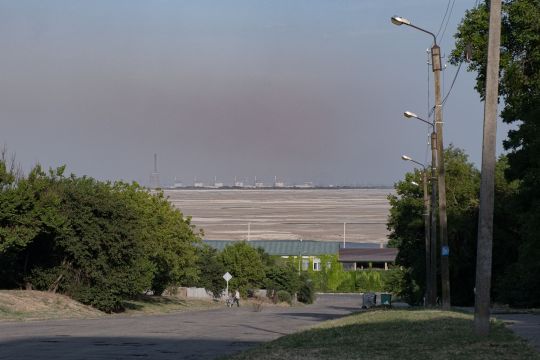
4 notes
·
View notes
Text
In Dnipropetrovsk Oblast
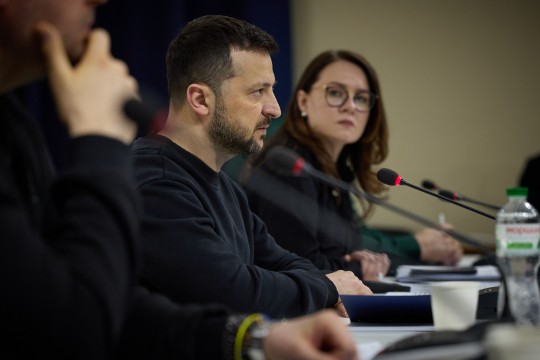
3 notes
·
View notes
Text
A Russian missile strike hit a railway station the village of Chaplyne in Dnipropetrovsk Oblast on Aug. 24, killing at least 15 people and wounding about 50 others (source).
Illustration (c) Nikita Titov
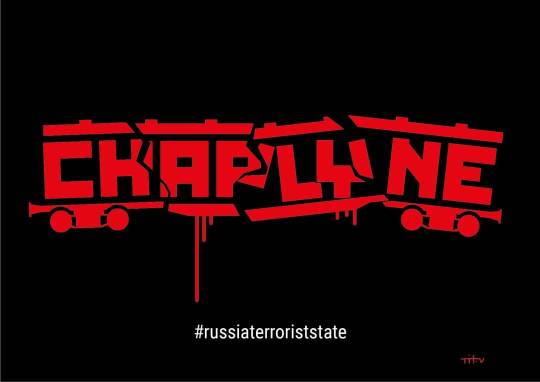
39 notes
·
View notes
Text
Clan capitalism
Ukraine became independent in 1991 following a referendum in which more than 90% of voters voted in favor.[3] Until 2014, Russia accepted this result and recognized Ukraine’s existence in a sort of regime of “limited sovereignty”. Ukraine was tied to its larger neighbor by economic relations[4] and Russia was able to use its local clients to influence internal political development. The latter has long been turbulent.
The period of economic transition in which Ukraine followed, to some extent, the prescriptions of the International Monetary Fund (IMF) and the World Bank, quickly created a new capitalist class. At first, it was composed mainly of “red directors” (i.e., the managerial cadres of the Stalinist regime), and later also of broader layers – from the ranks of the technical intelligentsia, various parts of the state apparatus and the criminal underworld. The 1990s were a true Eldorado for this class, though often quite dangerous for its individual members. Using both legal and extralegal methods, it seized key enterprises and banks, which it either stripped of all assets or concentrated into giant holdings and investment groups. Profits were exported to tax havens. At the same time, it began to take control of the media and politics. Unlike its predecessors in the Stalinist nomenklatura, it also managed to integrate itself into the global capitalist class, at least in terms of the use of its consumption fund (yachts and luxury properties abroad, jets, as well as private investments in international financial markets).
Meanwhile, Ukraine’s real GDP per capita was in steady decline– up until 2000. Average life expectancy decreased from 70.5 (in 1989) to 67.7 years. Non-payment of wages,[5] work in the informal economy, and a decline in purchasing power became everyday realities for the Ukrainian working class. Although the numerous strikes, marches, hunger strikes, and blockades have managed to score some local successes (e.g., the payment of wage arrears, postponement of privatization, etc.), they failed to change the overall course or create a broader movement.
The story so far is not that different from the Russian one.[6] However, the centralization and consolidation that Putin implemented after the Asian financial crisis and the collapse of the ruble (1997–98) never took place in Ukraine. Putin gradually nationalized some energy companies, built a “power vertical”, whose backbone was formed by security service cadres and various personal friends, and subordinated the oligarchs to this structure. The latter has since overseen the distribution of rent derived mainly from fossil fuel extraction. Ukraine’s domestic capitalist class, by contrast, has remained divided into competing “clans” that are tied to specific sectors of the economy and geographic regions.[7] The rivalry between these factions of Ukrainian capital has been the basis of political instability.
The numerous movements of political protest which often also voiced social and welfare demands were always co-opted by a political project of one of the groups – either from the very beginning or gradually. The “Ukraine without Kuchma” (2001–2002) and “Arise, Ukraine!” (2002–2003) protests were directed against President Leonid Kuchma, involved in several scandals, including the murder of a journalist. The “Orange Revolution” (2004–2005) was in response to the electoral fraud of the then prime minister and presidential candidate Viktor Yanukovych, as well as the suspicious privatization of Ukraine’s largest steelworks in Kryvyi Rih (Dnipropetrovsk Oblast), in which Kuchma’s brother-in-law was involved along with the former Donetsk gangster, Rinat Akhmetov. The movement “Rise up, Ukraine!” (2013) opposed President Yanukovych and his attempts to consolidate power. Finally, the Euromaidan (2014) was a reaction to his decision not to sign the Association Agreement with the European Union. The most successful of these movements, the Orange Revolution, and the Euromaidan, may have led to a change of political leadership, but they did not significantly shake the position of the clans, let alone the clan system as such. Ultimately, they became a means of bringing another faction of the domestic business class to power.
The lumpen-capitalist competition, in which one or the other faction gained control of the state (and thus preferential access to loans, subsidies and contracts), explains, at least in part, why the state has failed to impose a long-term, viable development plan on the country. On the other hand, this unstable environment also left some room for the development of a resistant civil society, including independent trade unions, activist organizations, and the radical left.[8]
Russia maintained an influence over Ukraine through those sections of the local capitalist class that were materially interested in maintaining close relations – for example, in the interests of their own sales, favorable prices for inputs (especially, but not exclusively, energy inputs), or gas transfer fees. The capital base of this faction was mainly concentrated in the Donbas, the former industrial heartland of the Soviet Union, home to a large Russian-speaking population and the birthplace of the Stakhanovite “movement”. In the 1990s it was the scene of the bloodiest conflicts within the capitalist class, a center of organized crime – but also the epicenter of the tragedy of the “old” working class, especially the miners. Their mass strikes in the late 1980s and early 1990s helped destroy the Soviet regime and win Ukraine’s independence,[9] but after a wave of privatizations, asset stripping and bankruptcies, many found themselves with no jobs or prospects. Between 1992 and 2013, the population of Donetsk and Luhansk Oblasts fell by 1.7 million, declining at twice the rate of the rest of the country.[10]
- karmína,“the tragedy of the ukrainian working class” (2022)
_ _ _
[3] This was about 76% of all eligible voters. In Crimea, support for independence was the weakest, at around 54% of the vote. Similarly in Crimea’s Sevastopol, which was a separate constituency – 57%. In Donetsk and Luhansk Oblasts, however, almost 84% of those who voted were in favor of independence. Wikipedia summarizes the results in detail.
[4] As recently as 2013, imports from Russia accounted for 29% of total imports of goods; exports to Russia accounted for almost 23% of Ukrainian exports of goods. By 2020, both indicators had dropped to 11% and 6%, respectively (see oec.world). On the other hand, exports to the EU15 already accounted for a larger share of total Ukrainian exports than exports to Russia in 2002. Thus, the dependence of Ukrainian industry on Russian gas and oil has played a decisive role.
[5] A specific feature of the Ukrainian (as well as Russian) transition was that official unemployment never reached a level close to twenty percent, such as in Poland (2002) or Slovakia (2001). Workers in enterprises that ran into trouble remained formally employed but were not paid – although in many cases they continued to work. Sometimes they received payments in kind instead of cash.
[6] Of course, in many respects it is also reminiscent of the history of other former Eastern Bloc countries, including Slovakia.
[7] The history and structure of the “clans” is described in “The Oligarchic Democracy” by Sławomir Matuszak. See also “The Consolidation of Ukrainian Business Clans” by Viatcheslav Avioutskii.
[8] A peculiar phenomenon of political life in Ukraine was the emergence of a seriesof fake left-wing groups founded around 2000 by the same circle of people. These pseudo-organizations established contacts with foreign “internationals”, mainly of the Trotskyist variety, and lured material aid or money from them. It was enough to write that they identified with their political program and wanted to become a Ukrainian or Russian section. Despite personal meetings, it took three or four years for the foreign donors – delighted by the unexpected growth of the workers’ movement in the former Eastern Bloc – to discover that their “partners” were in fact political hucksters. The scandal had seriously damaged the international reputation of the Ukrainian left, though one may also pause at the credulity of Western leftists.
[9] On earlier strikes by Donbas miners for economic demands and democratization, see the documentary Perestroika from Below (1989). Later strikes had more explicit political demands, including national independence. See the interviews with strike leaders in Donetsk, as well as a brief documentary (with English subtitles). The history of miners’ protest from perestroika to 2000 is summarized in an essay by Vlad Mykhnenko subtitled “Ukrainian miners and their defeat”. See also the recollections of the Dnipro working-class militant, Oleg Dubrovsky, in a 1996 interview (in English), as well as his analysis of the process of privatization of the mining industry (in Russian).
[10] One of the consequences of the disintegration of the mining industry in the Donbas has been the growth of illegal mining in the so-called kopanki. A section of the 2005 documentary, Workingman’s Death, focuses on the phenomenon. The post-apocalyptic landscape of the Donetsk Oblast is depicted in the short documentary, Life After the Mine (2013).
9 notes
·
View notes
Text
Warning: This story contains graphic images and descriptions that some readers may find disturbing.
Scrolling through photos from the mass burial site in Izium, Oksana Sova immediately recognized her husband's bracelet on a corpse's wrist.
"I immediately knew it was him," Sova, 37, told the Kyiv Independent.
It was that blue-and-yellow bracelet he always wore as a lucky charm – a gift their children gave him before he headed to the front line back in 2014.
Her husband, Serhiy, went missing in action in Kharkiv Oblast on April 19. On that day, they got to talk for two minutes before he had to go back to the front line. Sova has been trying to call her husband’s number day and night since then, but to no avail.
All this time, Sova had been clinging to the hope of seeing her husband alive. But with every passing day, it was becoming more difficult to brush off the looming reality.
On Sept. 16, sitting in heavily-shelled Nikopol in Dnipropetrovsk Oblast, Sova was glued to her phone, checking the news emerging from the liberated areas of Kharkiv Oblast.
Ten days earlier, Ukraine launched a sudden counteroffensive in the northeastern region, liberating the city of Izium by Sept. 10. Soon, a mass burial site containing 447 bodies was uncovered in the recently liberated city.
Immediately, a photo of a severely decomposed arm with a blue-and-yellow bracelet on it started circulating online.
"I was crying, screaming horribly, and couldn't control it," Sova said.
Seeing their mother lose control of herself for the first time, her children, aged 9 and 14, immediately understood what had happened. But still, Sova left some room for doubt until she found another photo of her husband, this time capturing the tattoos still visible on his body.
"It was as if it wasn't just my husband's life that ended, but my life ended," Sova said, bursting into tears. "I lost all meaning in life."
New Year's memories
The latest New Year's Eve is the last happy memory that Sova now holds on to.
Serhiy served in northern Chernihiv Oblast at the time, but his commander permitted him to make a quick trip back home to see his wife and two children.
Even though Serhiy only had two nights at home, the family made the best out of it. They had a barbecue and made plans for the year ahead.
"We just wanted to spend time at home, together with the whole family, and nothing else," Sova said with a hint of a smile.
Less than two months later, on Feb. 24, Russian forces began an all-out war. The northern Chernihiv Oblast, where Serhiy was stationed, immediately became the front line.
After successfully defeating the Russian army in Chernihiv Oblast, Serhiy's regiment was transferred to northeastern Kharkiv Oblast, where fierce battles were ongoing.
In one of his last phone calls, Serhiy talked about the increasing intensity of Russia's shelling.
"(My husband) didn't back down," Sova said. "He stayed and fulfilled his heroic duty till the end."
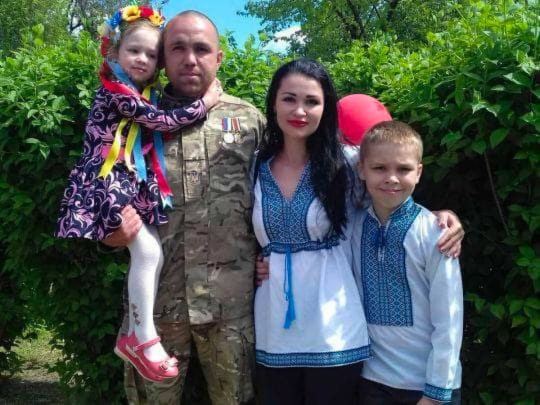
Soldier by birth
With her husband being a soldier during war, Sova had to get used to the agony of living with uncertainty.
Serhiy, a cynologist, was first drafted in 2014, where he served in the village of Pisky near the Donetsk Airport. His main task was supplying Ukrainian defenders holding the airport with arms.
Since then, he has spent most of his time on the battlefield, only occasionally returning home to be with his family.
Knowing the risks, Serhiy would sometimes sit down with his wife and try to prepare her for the worst possible outcome.
"He knew where he was going. He knew what he was fighting for," Sova said.
Every time Serhiy returned home, he felt a strong urge to go back to the front line, worrying that Moscow would escalate and launch an all-out war.
Despite being away, Serhiy was always a good father and husband. Sova said he would always hear her out and was "a shoulder to lean on."
"It hurts so much how I want to talk to him now, and I can't call him," she said.
Sova is now also struggling financially since it's nearly impossible to find a job in Nikopol, a city located just across the river from the Russian-occupied Zaporizhzhia Nuclear Power Plant in Enerhodar and shelled daily.
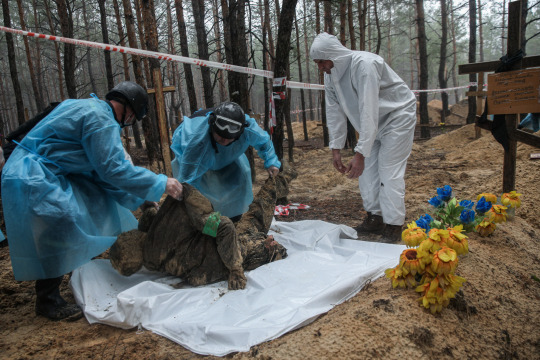
Saying goodbye
To officially confirm her husband's death, Sova traveled to Kharkiv Oblast to identify the body a few days after the exhumation started at the mass burial site.
The body was heavily decomposed, so she was asked to look at one of the tattoos to identify her husband. The body was then handed to the family for burial.
A total of 447 bodies have been exhumed from Izium's mass burial site, the State Emergency Service reported on Sept. 25. All but 22 bodies belonged to civilians. Kharkiv Oblast Governor Oleh Synyehubov said that most bodies contain "signs of violent death," and 30 of them having traces of torture.
A week after Serhiy's body was discovered, the family held a private funeral in Nikopol. Late on Sept. 24, President Volodymyr Zelensky awarded Serhiy the title of Hero of Ukraine posthumously.
Despite their hometown now being on the southern front line, shelled daily, Sova said she wouldn't leave their family house full of warm memories of their 15-year-long marriage.
"(15 years with Serhiy) was the best thing in my life," Sova said. "He was the best person in my life."
14 notes
·
View notes
Text

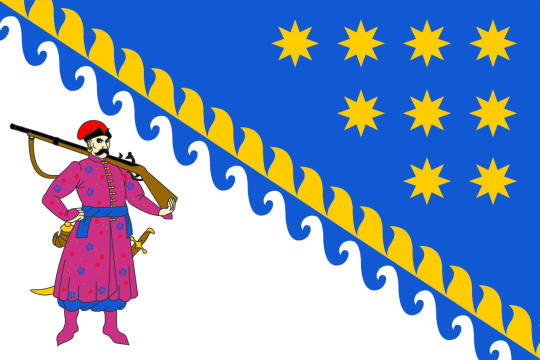
Flag Wars Bonus Round
7 notes
·
View notes